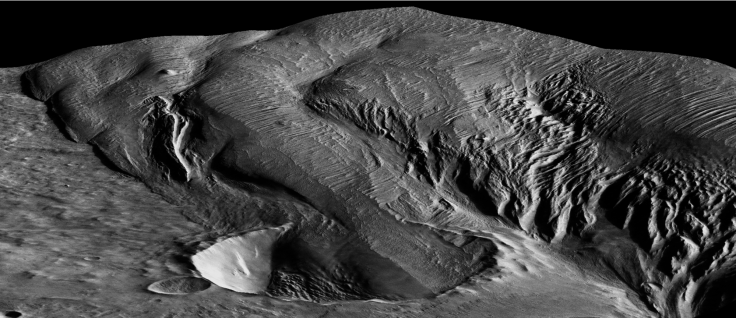Medusae Fossae: Strange Mars Formation’s Enigmatic Origin Finally Explained

After decades of speculation, scientists have finally answered how Medusae Fossae, a strange formation on the surface of Mars, came to be.
First discovered by NASA’s Mariner spacecraft in the 1960s, Medusae Fossae is a massive, easily-eroded deposit of soft-rock that runs along the equator of the red planet. It appears as a smooth and gently undulating surface in general but is also partially wind-sculpted into ridges and grooves.
The strange features and massive profile of the formation have drawn a lot of attention over the years, but nobody ever had a solid explanation for how it originated. This is where Lujendra Ojha and colleagues from Johns Hopkins University came to the rescue.
Using data from different Mars orbiters, the group analyzed sedimentary rocks forming the hills and mounds of the formation and found volcanic eruptions that occurred more than three billion years ago are to be blamed.
Scientists have long known sedimentary rocks form when rock debris and dust accumulates on the surface and cement over a long period. The same is believed to have formed Medusae Fossae, but until now, it was unclear whether it was water, ice, wind, or volcanic eruption that accumulated the materials required for the process.
While radar studies indicated the unusual composition of the rocks, the team decided to look into their aspect of density — something never done before — to see if the formation’s rocks were porous or a mixture of rock and ice.
The findings of the work went with the first case and revealed the rocks were nearly 70 percent as dense as the Martian crust itself. Further analysis confirmed no other factor, except volcanic eruption, is good enough to explain such a high level of density.
According to the researchers, ancient Martian volcanoes would have shot jets of hot ash, rock, and gas skyward while erupting. These materials would have streamed downhill after plummeting to the ground and cemented the rocks that formed Medusae Fossae.
Though half of the soft-rock that formed the deposit has eroded away with time, the formation still makes up the biggest known volcanic deposit in the entire solar system. It is a whopping 100 times bigger than such deposit on Earth.
"This is a massive deposit, not only on a Martian scale but also in terms of the solar system, because we do not know of any other deposit that is like this," Ojha said in a statement. "If you were to distribute the Medusae Fossae globally, it would make a 9.7-meter (32-foot) thick layer."
That said, the research team also noted the volcanic explosions that formed such a massive deposit would have significantly changed the geography of the planet. The eruptions would have spewed huge amounts of climate-altering and toxic gases into the atmosphere. This would have warmed the planet and changed the chemistry of its surface and atmosphere, affecting the chances of life if there were any.
The study titled, "The Density of the Medusae Fossae Formation: Implications for its Composition, Origin, and Importance in Martian History," was published in the journal Geophysical Research: Planets.
© Copyright IBTimes 2024. All rights reserved.











